Don't wanna be here? Send us removal request.
Photo
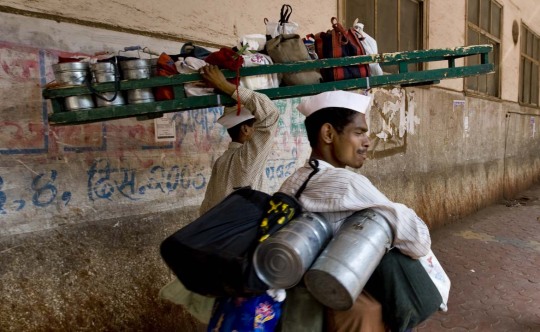
A dabbawala; also spelled as dabbawalla or dabbawallah; is a person in India, most commonly in Mumbai, who is part of a delivery system that collects hot food in lunch boxes from the residences of workers in the late morning, delivers the lunches to the workplace utilizing various modes of transport, predominantly bicycles and the railway trains, and returns the empty boxes back to the customer's residence that afternoon. They are also made use of by prominent meal suppliers in Mumbai where they ferry ready, cooked meals from central kitchens to the customers and back.
In Mumbai, most office goers prefer to eat home cooked food rather than eat outside, usually for reasons of taste and hygiene, hence the concept. A number of work-from-home women also supply such home cooked meals, delivering through the dabbawala network.
Source: Wikipedia
9 notes
·
View notes
Photo

Motown is an American record company founded by Berry Gordy, Jr. on January 12, 1959 in Detroit, Michigan, in the United States as Tamla Records, and was incorporated as "Motown Record Corporation" on April 14, 1960.
The name, a portmanteau of motor and town, is also a nickname for Detroit.
Motown played an important role in the racial integration of popular music by achieving a crossover success. In the 1960s, Motown and its subsidiaries were the most successful proponents of what came to be known as "The Motown Sound", a style of soul music with a distinct pop influence.
During the 1960s, Motown achieved spectacular success for a small record company: 79 records in the Billboard Top Ten between 1960 and 1969.
Source: Wikipedia.
1 note
·
View note
Photo
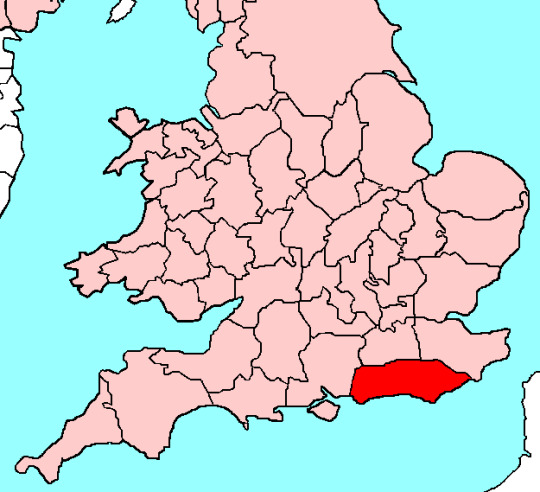
Sussex (/ˈsʌsɨks/; abbreviated Sx), from the Old English Sūþsēaxe ('South Saxons'), is anhistoric county in South East England corresponding roughly in area to the ancient Kingdom of Sussex. Clockwise, it is bounded to the west by Hampshire; north by Surrey, north-east by Kent, south by the English Channel and is divided for local government into West Sussex and East Sussex and the city of Brighton and Hove. Brighton and Hove was created as a unitary authority in 1997, and was granted City status in 2000. Until then, Chichester had been Sussex's only city.
Sussex has three main geographic sub-regions, each oriented approximately east to west. In the south-west of the county lies the fertile and densely populated coastal plain. North of this lie the rolling chalk hills of the South Downs, beyond which lies the well-wooded Sussex Weald.
The name 'Sussex' derives from the Kingdom of Sussex, according to legend it was founded by Ælle of Sussex in 477 AD, then in 825 it was absorbed into the kingdom of Wessex and the later kingdom of England.
The region's roots go back further to the location of some of Europe's earliest hominid finds at Boxgrove.
Sussex has been a key location for England's major invasions, including the Roman invasion of Britain and the Battle of Hastings.
In 1974, the Lord-Lieutenant of Sussex was replaced with one each for East and West Sussex, which became separate ceremonial counties.
Sussex continues to be recognised as a geographical territory and cultural region. It has had a single police force since 1968 and its name is in common use in the media. In 2007, Sussex Day was created to celebrate Sussex's rich culture and history. Based on the traditional emblem of Sussex, a blue shield with six gold martlets, the flag of Sussex was recognised by the Flag Institute in 2011. In 2013, Secretary of State for Communities and Local Government Eric Pickles formally recognised and acknowledged the continued existence of England's 39 historic counties, including Sussex.
Source: Wikipedia.
0 notes
Photo
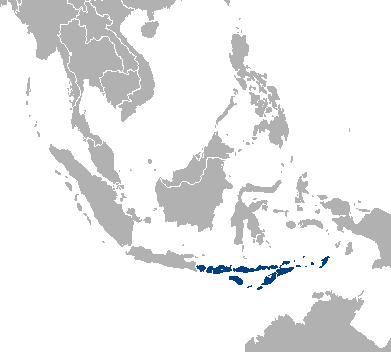
The Lesser Sunda Islands or Nusa Tenggara ("Southeastern Islands") are a group of islands in Maritime Southeast Asia, north of Australia.
Together with the Greater Sunda Islands to the west they make up the Sunda Islands.
The islands are part of a volcanic arc, the Sunda Arc, formed by subduction along the Java Trench in the Java Sea.
The Lesser Sundas comprise many islands, most of which are part of Indonesia and are administered as the provinces of Bali, West Nusa Tenggara, East Nusa Tenggara and southern part of Maluku.
The eastern half of Timor is part of East Timor.
The Lesser Sunda Islands consist of two geologically distinct archipelagos.
The northern archipelago, which includes Bali, Lombok, Sumbawa, Flores and Wetar, is volcanic in origin. A number of these, like Mount Rinjanion Lombok, are still active while others, such as Kelimutu on Flores with its three multi-coloured crater lakes, are extinct. The northern archipelago began to be formed during the Pliocene, about 15 million years ago, as a result of the collision between the Australian and the Asian plates.[2] The islands of the southern archipelago, including Sumba, Timor and Babar, are non-volcanic and appear to belong to the Australian plate. The geology and ecology of the northern archipelago share a similar history, characteristics and processes with the southern Maluku Islands, which continue the same island arc to the east.
There is a long history of geological study of these regions since Indonesian colonial times; however, the geological formation and progression is not fully understood, and theories of the geological evolution of the islands changed extensively during the last decades of the 20th century.
Lying at the collision of two tectonic plates, the Lesser Sunda Islands comprise some of the most geologically complex and active regions in the world. There are a number of volcanoes located on the Lesser Sunda Islands.
Source: Wikipedia.
0 notes
Photo
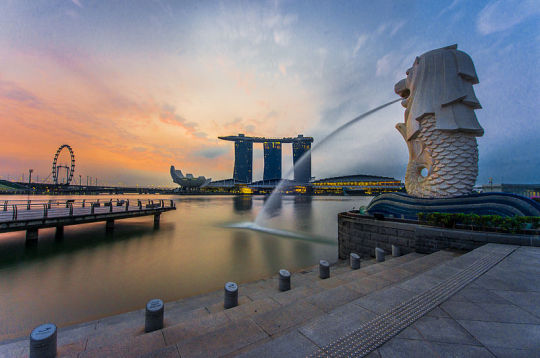
The Merlion (Malay: Singa-Laut) is a mythical creature with the head of a lion and the body of a fish, used as a mascot and national personification of Singapore. Its name combines "mer" meaning the sea and "lion". The fish body represents Singapore's origin as a fishing village when it was called Temasek, which means "sea town" in Javanese. The lion head represents Singapore's original name — Singapura — meaning "lion city" or "kota singa".
1 note
·
View note
Photo
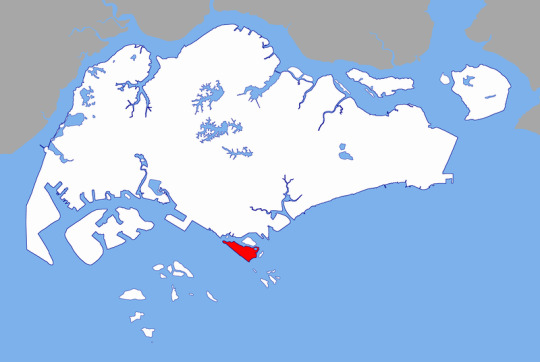
Sentosa (Chinese: 圣陶沙) is a popular island resort in Singapore, visited by some five million people a year.
Attractions include a 2 km (1.2 mi) long sheltered beach, Fort Siloso, two golf courses, two five-star hotels, and the Resorts World Sentosa, featuring the theme park Universal Studios Singapore.
The name Sentosa translates as "peace and tranquility" in Malay (derived from Santosha in Sanskrit).
Sentosa was once known as Pulau Belakang Mati (Chinese: 绝后岛), which in Malay means the "Island (pulau) of Death (mati) from Behind (belakang)".
[...]
In a 1972 contest organised by the Singapore Tourist Promotion Board, the island was renamed Sentosa, a Malay word meaning "peace and tranquillity", from Sanskrit, Santosha.
Through the 1980s and 1990s, a number of pay-to-get-in tourist designations were built on the island, most of which the local people found uninteresting. Consequently, there was a joke that the name Sentosa stood for "So Expensive and Nothing to See Also".
Source: Wikipedia.
0 notes
Text
PDD
The diagnostic category pervasive developmental disorders (PDD), as opposed to specific developmental disorders (SDD), refers to a group of five disorders characterized by delays in the development of multiple basic functions including socialization and communication. The pervasive developmental disorders are:
Pervasive developmental disorder not otherwise specified (PDD-NOS), which includes atypical autism, and is the most common;
Autism, the best-known;
Asperger syndrome;
Rett syndrome; and
Childhood disintegrative disorder (CDD).
The first three of these disorders are commonly called the autism spectrum disorders; the last two disorders are much rarer, and are sometimes placed in the autism spectrum and sometimes not.
The onset of pervasive developmental disorders occurs during infancy, but the condition is usually not identified until the child is around 3 years old. Parents may begin to question the health of their child when developmental milestones are not met, including age appropriate motor movement and speech production.
There is a division among doctors on the use of the term PDD. Many use the term PDD as a short way of saying PDD-NOS. Others use the general category label of PDD because they are hesitant to diagnose very young children with a specific type of PDD, such as autism. Both approaches contribute to confusion about the term, because the term PDD actually refers to a category of disorders and is not a diagnostic label.
Source: Wikipedia.
0 notes
Text
Personality Disorder
Personality disorders are a class of mental disorders characterised by enduring maladaptive patterns of behavior, cognition and inner experience, exhibited across many contexts and deviating markedly from those accepted by the individual's culture. These patterns develop early, are inflexible and are associated with significant distress or disability. The definitions may vary some according to other sources.
Official criteria for diagnosing personality disorders are listed in the Diagnostic and Statistical Manual of Mental Disorders, published by the American Psychiatric Association, and in the mental and behavioral disorders section of the International Statistical Classification of Diseases and Related Health Problems, published by the World Health Organization. The DSM-5 published in 2013 now lists personality disorders in exactly the same way as other mental disorders, rather than on a separate 'axis' as previously.
Personality, defined psychologically, is the set of enduring behavioral and mental traits that distinguish human beings. Hence, personality disorders are defined by experiences and behaviors that differ from societal norms and expectations. Those diagnosed with a personality disorder may experience difficulties in cognition, emotiveness, interpersonal functioning or control of impulses. In general, personality disorders are diagnosed in 40–60 percent of psychiatric patients, making them the most frequent of all psychiatric diagnoses.
These behavioral patterns in personality disorders are typically associated with substantial disturbances in some behavioral tendencies of an individual, usually involving several areas of the personality, and are nearly always associated with considerable personal and social disruption. A person is classified as having a personality disorder if their abnormalities of behavior impair their social or occupational functioning.
Additionally, personality disorders are inflexible and pervasive across many situations, due in large part to the fact that such behavior may be ego-syntonic (i.e. the patterns are consistent with the ego integrity of the individual) and are, therefore, perceived to be appropriate by that individual. This behavior can result in maladaptive coping skills, which may lead to personal problems that induce extreme anxiety, distress or depression. These patterns of behavior typically are recognized in adolescence and the beginning of adulthood and, in some unusual instances, childhood.
There are many issues with classifying a personality disorder. There are many categories of definition, some mild and some extreme. Because the theory and diagnosis of personality disorders stem from prevailing cultural expectations, their validity is contested by some experts on the basis of invariable subjectivity. They argue that the theory and diagnosis of personality disorders are based strictly on social, or even sociopolitical and economic considerations.
Source: Wikipedia.
0 notes
Text
DSM
The Diagnostic and Statistical Manual of Mental Disorders (DSM), published by the American Psychiatric Association, offers a common language and standard criteria for the classification of mental disorders. It is used, or relied upon, by clinicians, researchers, psychiatric drug regulation agencies, health insurance companies, pharmaceutical companies, the legal system, and policy makers together with alternatives such as the International Statistical Classification of Diseases and Related Health Problems (ICD), produced by the World Health Organization (WHO). The DSM is now in its fifth edition, DSM-5, published on May 18, 2013.
The DSM evolved from systems for collecting census and psychiatric hospital statistics, and from a United States Army manual. Revisions since its first publication in 1952 have incrementally added to the total number of mental disorders, although also removing those no longer considered to be mental disorders.
The International Statistical Classification of Diseases and Related Health Problems (ICD), produced by the World Health Organization (WHO), is the other commonly used manual for mental disorders. It is distinguished from the DSM in that it covers health as a whole. It is in fact the official diagnostic system for mental disorders in the US, but is used more widely in Europe and other parts of the world. The coding system used in the DSM is designed to correspond with the codes used in the ICD, although not all codes may match at all times because the two publications are not revised synchronously.
While the DSM has been praised for standardizing psychiatric diagnostic categories and criteria, it has also generated controversy and criticism. Critics, including the National Institute of Mental Health, argue that the DSM represents an unscientific and subjective system. There are ongoing issues concerning the validity and reliability of the diagnostic categories; the reliance on superficial symptoms; the use of artificial dividing lines between categories and from ‘normality’; possible cultural bias; medicalization of human distress. The publication of the DSM, with tightly guarded copyrights, now makes APA over $5 million a year, historically totaling over $100 million.
Source: Wikipedia.
0 notes
Text
Egosyntonic and egodystonic
Egosyntonic is a psychological term referring to behaviors, values, feelings that are in harmony with or acceptable to the needs and goals of the ego, or consistent with one's ideal self-image.
Egodystonic (or ego alien) is the opposite of egosyntonic and refers to thoughts and behaviors (e.g., dreams, impulses, compulsions, desires, etc.) that are in conflict, or dissonant, with the needs and goals of the ego, or, further, in conflict with a person's ideal self-image.
Many personality disorders are considered to be egosyntonic and are, therefore, difficult to treat. Anorexia nervosa, a difficult-to-treat Axis I disorder, is also considered egosyntonic because many of its sufferers deny that they have a problem.
Obsessive compulsive disorder is considered to be egodystonic as the thoughts and compulsions experienced or expressed are not consistent with the individual's self-perception, meaning the patient realizes the obsessions are not reasonable.
The egosyntonic and egodystonic concepts are studied in detail in abnormal psychology; while 'the notion of ego syntony plays an important part in psychoanalytic ego psychology'.
Source: WIkipedia.
4 notes
·
View notes
Photo
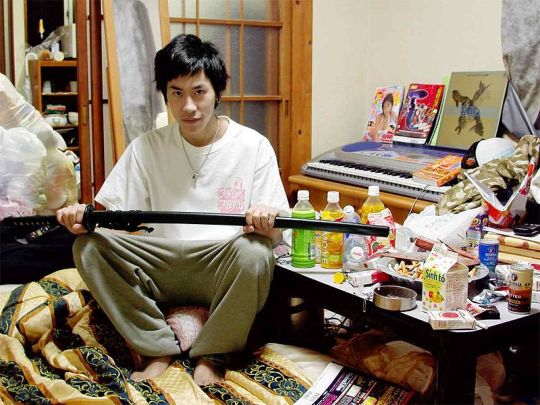
Hikikomori (ひきこもり or 引き籠もり Hikikomori?, literally "pulling inward, being confined", i.e., "acute social withdrawal") is a Japanese term to refer to the phenomenon of reclusive adolescents or adults who withdraw from social life, often seeking extreme degrees of isolation and confinement.
The term hikikomori refers to both the sociological phenomenon in general as well as to people belonging to this societal group. Hikikomori have been described as recluses, loners, or "modern-day hermits."
While the degree of the phenomenon varies on an individual basis, in the most extreme cases, some people remain in isolation for years or even decades.
Often hikikomori start out as school refusals, or futōkō (不登校) in Japanese (an older term is tōkōkyohi (登校拒否)
The Japanese Ministry of Health, Labour and Welfare defines hikikomori as people who refuse to leave their house and, thus, isolate themselves from society in their homes for a period exceeding six months The psychiatrist Tamaki Saitō defines hikikomori as "A state that has become a problem by the late twenties, that involves cooping oneself up in one’s own home and not participating in society for six months or longer, but that does not seem to have another psychological problem as its principal source."
More recently, researchers have suggested six specific criteria required to "diagnose" hikikomori: 1) spending most of the day and nearly every day confined to home, 2) marked and persistent avoidance of social situations, 3) symptoms interfering significantly with the person’s normal routine, occupational (or academic) functioning, or social activities or relationships, 4) perceiving the withdrawal as ego-syntonic, 5) duration at least six months, and 6) no other mental disorder that accounts for the social withdrawal and avoidance.
While many people feel the pressures of the outside world, hikikomori react by complete social withdrawal. In some cases, they isolate themselves in their room, apartment or house for prolonged periods, sometimes measured in years. They usually have few, if any, friends.
While hikikomori favor indoor activities, some venture outdoors on occasion. The withdrawal from society usually starts gradually. Affected people may appear unhappy, lose their friends, become insecure, shy, and talk less.
While hikikomori is mostly a Japanese phenomenon, cases have been found in the United States, Oman, Spain, Italy, South Korea and France. Recent research using the same standardized definition of hikikomori has found evidence of it existing in other countries as wide-ranging as the United States and India.
Source: Wikipedia.
1 note
·
View note
Text
Ah Lian
Ah Lian (Chinese: 阿莲; Pe̍h-ōe-jī: a-lián) is a pejorative term applied to a certain group of ethnic Chinese girls in Southeast Asia, especiallySingapore and Malaysia. These Chinese girls, in their teens and twenties, are usually found in larger cities in the region. [They] are regarded as bimbos, and are stereotyped as anti-intellectual, superficial, materialistic, and shallow.
Ah Lians are commonly stereotyped as having hair dyed in bright colours, and wearing outdated Japanese fashion, although how much of this is true is debatable. Most of them also like to wear hot pants or mini skirts. Most Ah Lians have straightened long hair, usually with thick fringes. They also tend to wear colored eye contacts to make their eyes look big. They like walking in big groups where most of the people in the group are Ah Lians or Ah Bengs and make their presence known by talking loudly.
They enjoy taking self-portraits of themselves and usually imitate the way Japanese girls take their pictures, making their eyes look big and puffing out their cheeks. They also take pictures by putting a horizontal 'Peace sign' over their eyes, pressing a fist facing outwards against their puffed cheek. They also apply a very sharp tone in their speech which they classify as "cute". Another distinct feature of an Ah Lian is they swear in most of their conversations similarly to their male counterparts, Ah Bengs. Ah Lians are stereotyped as very loose sexually.
Ah Lians commonly speak a kind of hybrid mix of Singlish or Manglish and Chinese, or Chinese-related dialects. It is also common for the grammar from these dialects to cross over to English usage, creating English phrases with Chinese grammar.
The term "Lao Lian" is sometimes applied to older women ("lao" means old in Chinese) who exhibit similar characteristics as Ah Lians.
Source: Wikipedia.
1 note
·
View note
Text
Ah Beng
Ah Beng (Chinese: 阿明; Pe̍h-ōe-jī: a-bêng or a-bîng) is a stereotype applied to a certain group of young Chinese men in Southeast Asia, particularly Singapore and Malaysia, especially in the broader Klang area.
The stereotypical view of an Ah Beng is a young Chinese man or teenager who lacks cultural refinement or indulges in criminal activity or is involved in brawls or arguments out of disagreements with other people. Ah Bengs are also sometimes associated with extensively modified or zhng-ed cars, often in the boy racer style, and are stereotypically seen as excessively flashy and materialistic.
In Singapore and Malaysia, the term Ah Beng usually refers to males who have unusual styles and tastes, and the term lala-zai refers to males involved in stereotypical gangster activity or fashion such as the dyeing of hair. They commonly speak in Mandarin or Hokkien. The female equivalent of an Ah Beng is an Ah Lian.
Ah Bengs are stereotypically Chinese men in their early teens to late 20s, seen hanging out in groups and typically speaking in local slang, which is Hokkien or Cantonese mixed with English and Malay, such as Manglish or Singlish. Their English level is limited to simple English words with incorrect grammar. When having a conversation, Ah Bengs like to curse in their daily speech. Most Ah Bengs are usually associated with street gangs or secret societies.
Ah Beng comes from the romanization of the Hokkien pronunciation of 阿明 (Pe̍h-ōe-jī: a-bêng). 明 is a word commonly used in the names of Chinese males in the region; it means 'bright' in the sense of intelligence. In Malaysia, Ah Beng is also known as lala zai. 'Lala' has no actual meaning in itself, while 'zai' (pronounced 'chai') means 'boy'. 'Lala zai' refers to individuals who speak Manglish and possess a strong preference for gaudy fashions or hairstyles.
Source: Wikipedia.
1 note
·
View note
Text
Ars (Israel)
Ars (Arabic: عرص ʿarṣ, Hebrew: ערס `ars), or Arsim (the plural in Hebrew) is a derogatory Hebrew slang term for the Israeli stereotype of a low-class young man. The stereotype may also refer to attributes such as flashy jewelry and clothing. A woman fitting this stereotype is an Arsit (though this usually implies a certain manliness in the woman), the word formed by adding the Hebrew feminine ending "it" to the Arabic word "Ars". Another term used for women is Freḥa (פרחה), originally a female Moroccan first name popular in the 1950s and the 1960s, during the large immigration wave from Morocco to Israel.
The Ars subculture traditionally was associated with young Jews of Middle Eastern origin, but in recent years has expanded to a broader range of ethnicities. In particular, "Freḥa" is used presently for intellectually shallow girls of all ethnicities, like bimbo or airhead in English.
The term is often considered offensive and racist towards Mizrahi youth, and is usually considered pejorative when said in person. Some criticize the term for stereotyping Mizrahi youth culture and for being inaccurate.
Source: Wikipedia.
0 notes
Photo
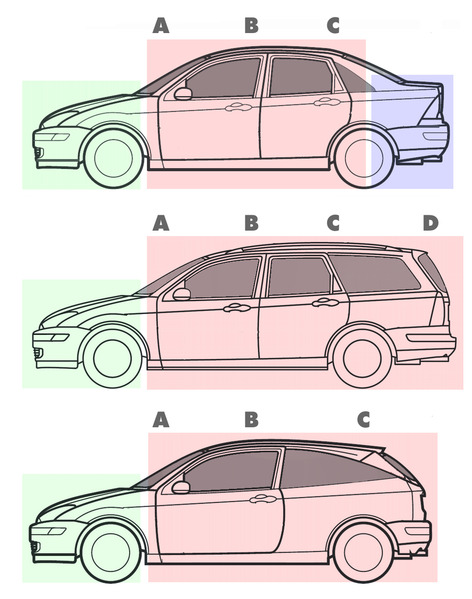
A hatchback is a car body configuration with a rear door that swings upward to provide access to a cargo area. Hatchbacks may feature fold-down second row seating, where the interior can be flexibly reconfigured to prioritize passenger vs. cargo volume. Hatchbacks may feature two- or three-box design.
While early examples of the body configuration can be traced to the 1930s, the Merriam-Webster dictionary dates the term itself to 1970. The hatchback body style has been marketed worldwide on cars ranging in size from superminis to small family cars, as well as executive cars.
Source: Wikipedia.
0 notes
Text
Spides
A spide is a pejorative stereotype in Northern Ireland, particularly in Belfast, used to refer to young, often unemployed male adults who have a particular dress code and attitude. The female version of a spide is a "millie", a term that is decades old and formerly referred to girls who worked in the Belfast mills.
Essentially the equivalent to the English "chav", many negative perceptions are associated with the stereotype. These include allegations that they engage in anti-social behaviour including drug dealing, car theft, joyriding, and loitering in public places in large groups, usually drinking alcohol and causing commotion. They are also seen as boy racers, often driving dangerously in modified 1990s era hot hatches and sedans. In terms of dress code, they are perceived as having high and tight haircuts and being clad in jewellery and sportswear, usually baseball caps, tracksuits and Nike Air Max trainers.
Other slang terms for "spides" include "smicks", "mokes", "steeks" and "jants". The use of these terms often depends on the town, city or county within Northern Ireland.
The name is thought to have originated in the late 1970s and early 1980s. During this time "tartan gangs" were popular in Belfast. Due to the tartan patterns of their jeans, they gained the nickname "spidermen", later shortened to "spide". While the tartan gangs of the time were closely associated with the Loyalist groupings of the Ulster Defence Association (UDA) and Ulster Young Militants (UYM), the term spide is applied to youths from both the loyalist and republican communities, and appears to be wholly without sectarian bias. Spides may support the paramilitary organisations of their background, such as the UDA or IRA.
The name may also have originated as a reference to elbow or neck spider web tattoos before it gradually gained a more general meaning to cover young people from working class areas.
Source: Wikipedia.
1 note
·
View note
Photo
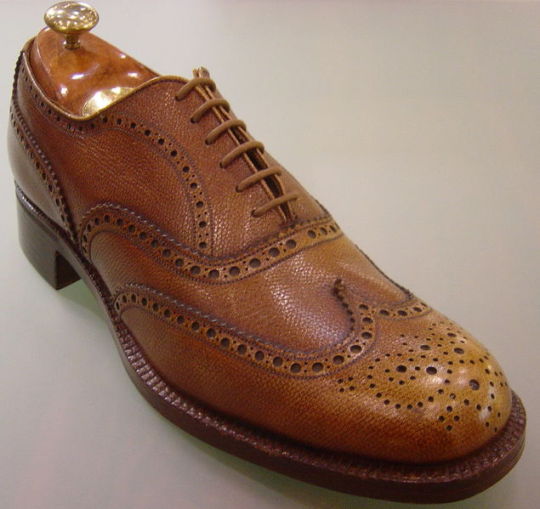
The Brogue (derived from the Gaelic bróg (Irish), bròg (Scottish) "shoe") is a style of low-heeled shoe or boot traditionally characterised by multiple-piece, sturdy leather uppers with decorative perforations (or "broguing") and serration along the pieces' visible edges.
Modern brogues trace their roots to a rudimentary shoe originating in Scotland and Ireland that was constructed using untanned hide with perforations, allowing water to drain when crossing wet terrain such as a bog.
Brogues were traditionally considered to be outdoor or country footwear not otherwise appropriate for casual or business occasions, but brogues are now considered appropriate in most contexts. Brogues are most commonly found in one of four toe cap styles (full or "wingtip", semi-, quarter and longwing) and four closure styles (Oxford, Derby, ghillie, and monk). Today, in addition to their typical form of sturdy leather shoes or boots, brogues may also take the form of business dress shoes, sneakers, high-heeled women's shoes, or any other shoe form that utilises or evokes the multi-piece construction and perforated, serrated piece edges characteristic of brogues.
Source: WIkipedia.
0 notes